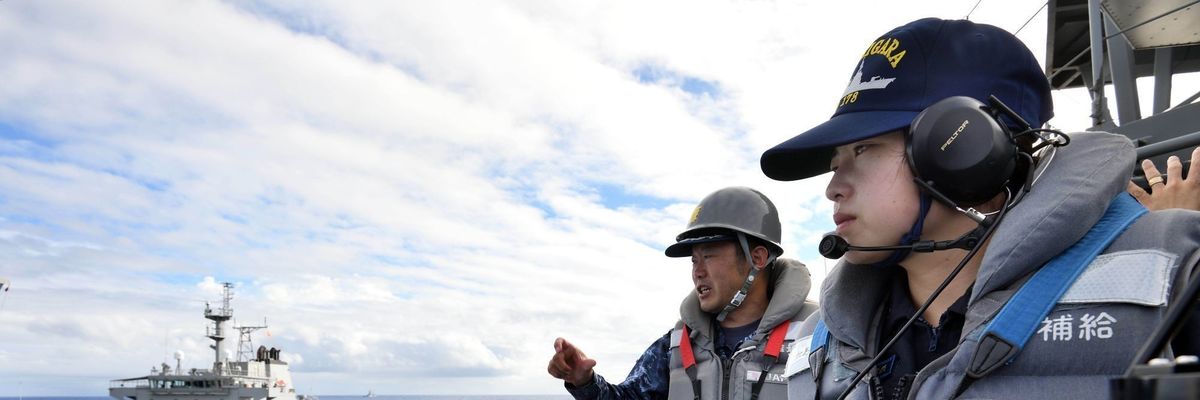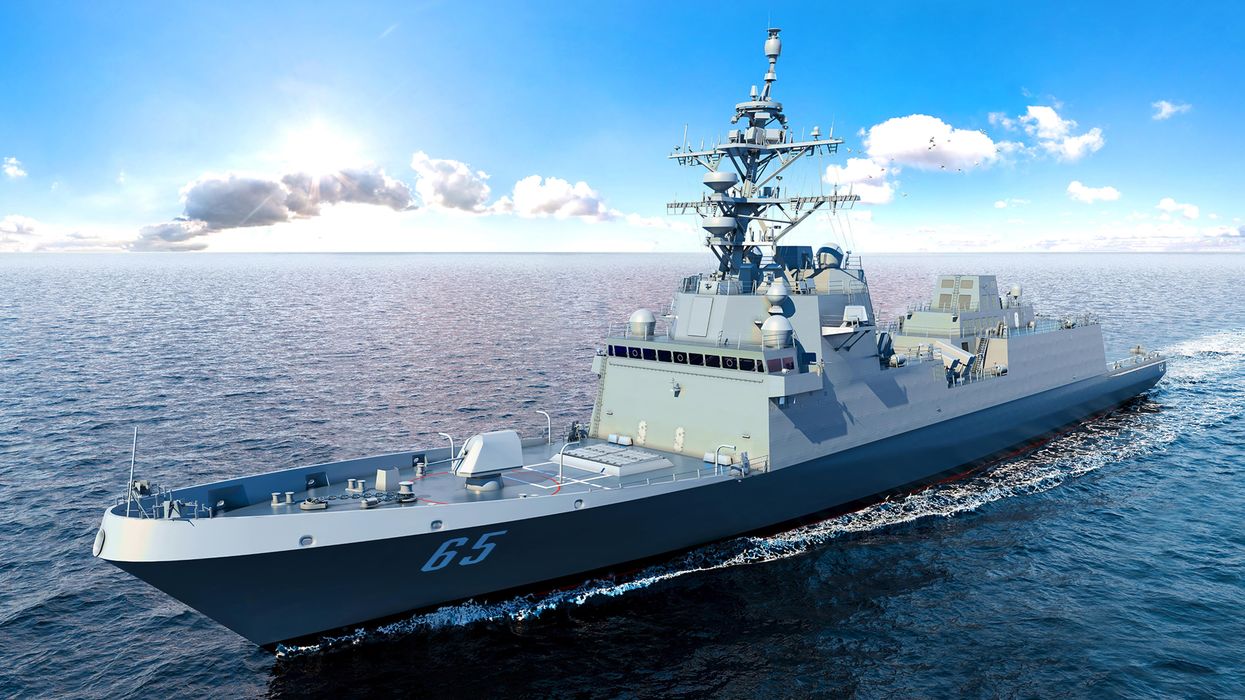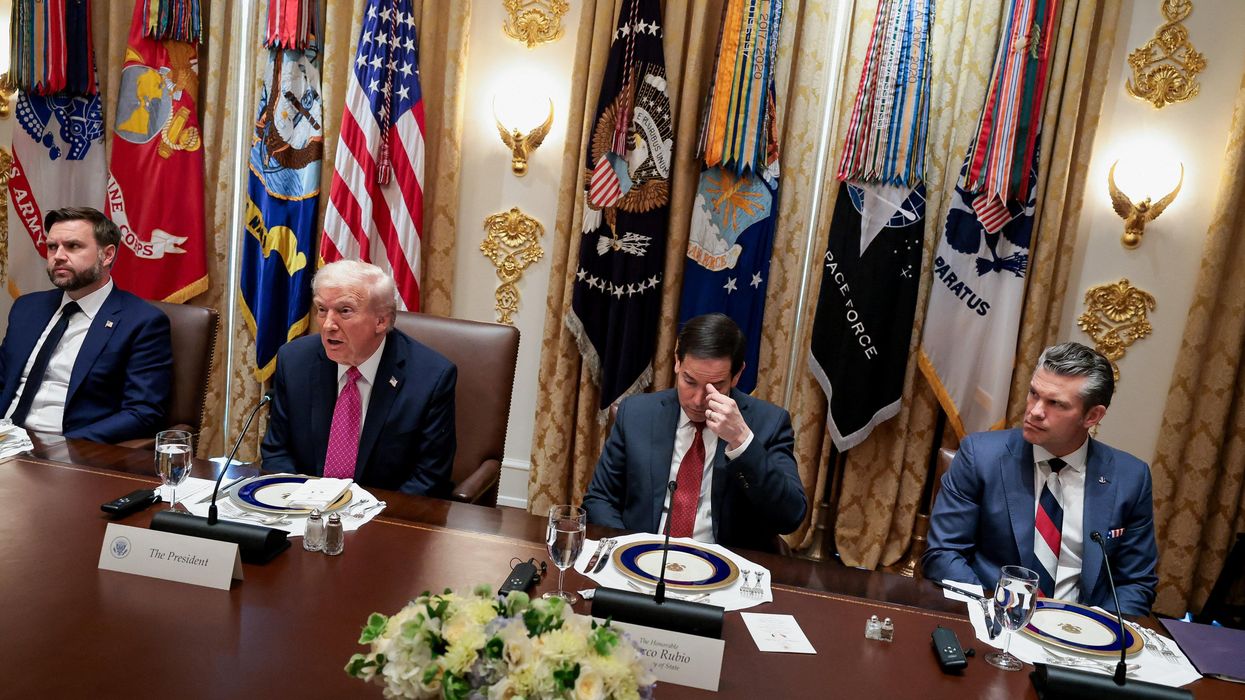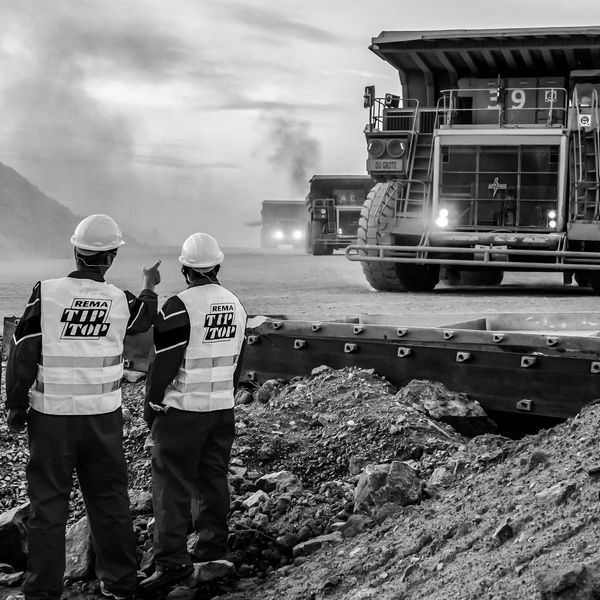A growing chorus of voices is calling for NATO expansion into the Indo-Pacific, a region the United States deems vital to its security and prosperity.
Japan is in talks to open a NATO office — the first of its kind in Asia. The liaison office would serve to “enable discussions with NATO’s security partners, such as South Korea, Australia and New Zealand, with geopolitical challenges from China and Russia in mind.”
Japan’s foreign minister, Yoshimasa Hayashi, blames the move on Russia’s invasion of Ukraine, which he says made the world “more unstable.” Japan is already undergoing the most significant changes to its security strategy since the end of World War II. In December 2022, it unveiled a five-year plan “once unthinkable in pacifist Japan” to make the country the world’s third-biggest military spender after the United States and China. This includes buying missiles capable of striking China.
Unsurprisingly, the NATO in Asia idea has drawn sharp criticism. There are those like John Pang who blame the “Cold War zombie” for the destruction of Afghanistan and Libya and for “destroying Ukraine, impoverishing Europe, and escalating… into an all-out war that threatens all of humanity with nuclear annihilation.”
Chinese Foreign Ministry spokesperson Wang Wenbin said in a recent press conference that the region does not require “a replica of NATO” and that most Asian counties “oppose the emergence of military blocs in the region.” He said Japan should “make the right call in keeping with the region’s stability and development interests and refrain from doing anything that may undermine mutual trust between regional countries and peace and stability in the region.”
Many have argued that NATO expansion played a role in Vladimir Putin's decision to invade Ukraine. This view appears to have been supported by CIA Director, and former U.S. Ambassador to Russia, William J. Burns during his stint in Moscow. “Ukrainian entry into NATO is the brightest of all redlines for the Russian elite (not just Putin),” he warned then in a diplomatic cable. “In my more than two and a half years of conversations with key Russian players, from knuckle-draggers in the dark recesses of the Kremlin to Putin’s sharpest liberal critics, I have yet to find anyone who views Ukraine in NATO as anything other than a direct challenge to Russian interests.”
Michael McFaul, another former U.S. ambassador to Russia, does not recall the topic of NATO expansion ever coming up in his interactions with Russian officials. He believes Moscow’s aggression stems from the country’s internal political dynamics and Putin’s “unconstrained, erratic adventurism.”
Those who see NATO as making the world safer argue that the multilateral collective security alliance is the reason Russia’s invasion was confined to a small region in a non-NATO country, and why NATO member states avoided any “kinetic activities.” In other words, had Ukraine been admitted to NATO, Russia would not have dared invade it.
Would the same logic apply to an Indo-Pacific NATO? Stephen Biegun, under secretary of state during the Trump administration, described the idea as “worth exploring,” but only if “the other countries are as committed as the United States.”
While NATO’s role in post-Cold War Europe will continue to be debated, there is no denying that the transatlantic security alliance did not deter Moscow from invading non-member Ukraine. Would it deter China from invading Taiwan?
Yes, some argue. A “replica of NATO” in the region could be fashioned out of the Quadrilateral Security Dialogue (the Quad), the multilateral security grouping comprising Australia, India, Japan and the United States. A strategy of “deterrence by denial” and the development of credible military capabilities and integration would “send a message to Beijing that any attempt to seize Taiwan by force will not go unanswered” and thus deter China’s “hostility and assertiveness” in the Indo-Pacific.
However, such optimism is misplaced.
First, even if NATO expansion was not the cause of Russia’s invasion of Ukraine, Russia could invade because Ukraine was not a NATO member. Militarizing the Quad without including Taiwan would similarly make Taiwan more, not less, of a target for China. The only way, if any, Taiwan would be truly protected is if it joined the Asian NATO. Such a development is simply impossible to contemplate. The United States still, seemingly begrudgingly, accepts the “one China policy.” Any official mention of the prospect of Taiwan joining an anti-China security alliance could trigger a conflict, one potentially of nuclear proportions.
Second, the United States cannot afford to do to China what it did to the Soviet Union, or even Russia. The old world order is crumbling. The one replacing it is not bipolar or even multipolar. It is a nonpolar world without global leaders, as Eurasia Group president Ian Bremmer observes. The United States is the only country that can wield military power anywhere in the world, but it is no longer a “multidimensional power,” capable of exerting influence in every domain. China’s rapidly growing military capabilities in Asia threaten America’s Indo-Pacific allies. But, whether it likes it or not, Washington is limited in how it can respond.
The two countries, Bremmer sums up, “are far too economically interdependent to decouple from each other. Bilateral trade between the two keeps making new highs, and other countries want access to both American muscle and the growing Chinese market (soon to become the world’s largest). You can’t have an economic cold war if there’s no one willing to fight it.” This is why, as Rep. Gregory W. Meeks, ranking member of the House Foreign Affairs committee, argues, the only way Washington can counter Beijing in the short and long term is with a “renewed focus on development and diplomacy.” Attempting to build a NATO in Asia would be both strategically and economically costly.
It would also likely be a waste of time. This is because India would not be a reliable NATO partner. Washington’s hope that New Delhi would help to counter Beijing is unrealistic. This is not just because of the country’s serious problems with democracy and economic woes. As Ashley Tellis of the Carnegie Endowment for International Peace points out, “India’s significant weakness compared with China, and its inescapable proximity to it, guarantee that New Delhi will never involve itself in any U.S. confrontation with Beijing that does not directly threaten its own security.”
Similarly, the Quincy Institute’s Sarang Shidore aptly warns that Washington’s attempts to build a stronger alliance with India “are likely to provoke [China] more than they are to deter.”
China’s rise and Russia’s war on Ukraine prompted America’s Asian regional allies to attempt to strengthen their domestic capabilities and Washington to revitalize its commitments to the region. Washington’s long-espoused pivot to Asia, as well as the recent mainstreaming of anti-Chinese Communist Party rhetoric in U.S. domestic politics, have laid the groundwork of reformulating the U.S.-backed security infrastructure in Asia. This could take multiple forms, and need not result in a new or expanded NATO.
Strengthening regional alliances, while avoiding the formalization of a multilateral defense alliance, is a more productive way forward. The United States could encourage its regional allies to take the lead in developing their defensive capabilities and rely on them to contain China. This does not mean American passivity or abandonment of the region. Washington would play a coordination role, perhaps in connection with the Quad and the Association of Southeast Asian Nations. This would ensure support and technical assistance for U.S. allies without the unrealistic and dangerous Article 5-level commitment.
















